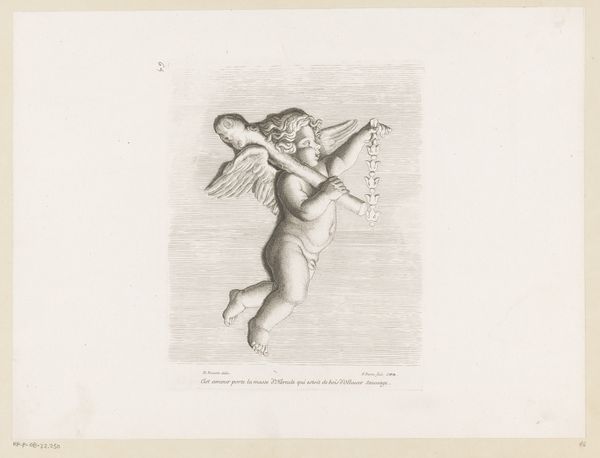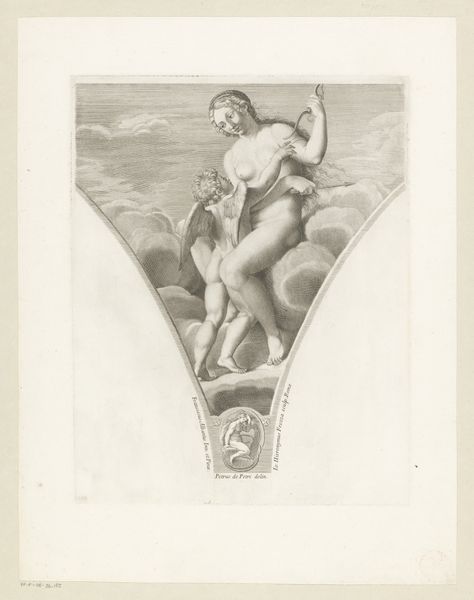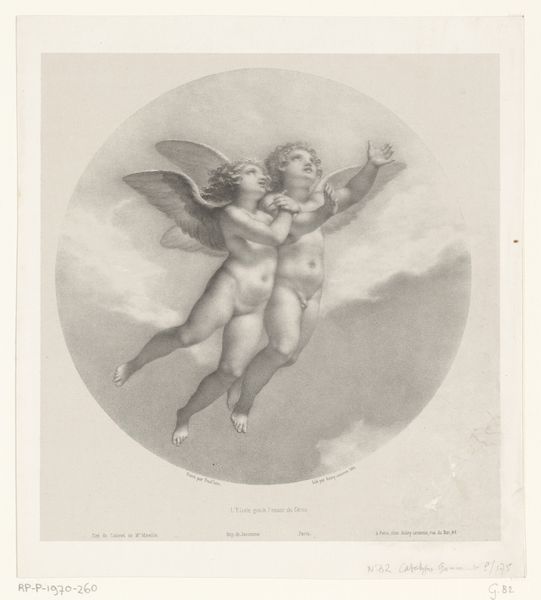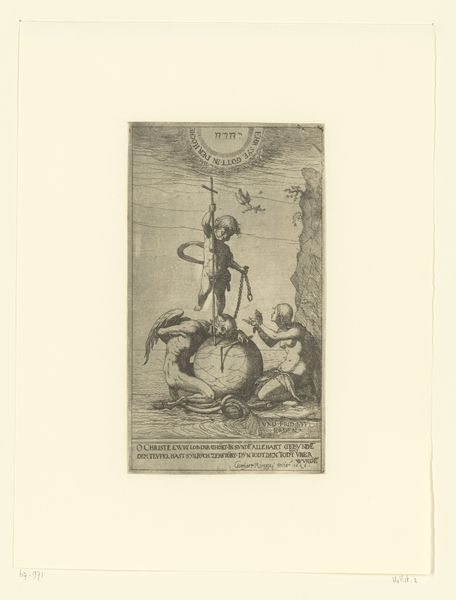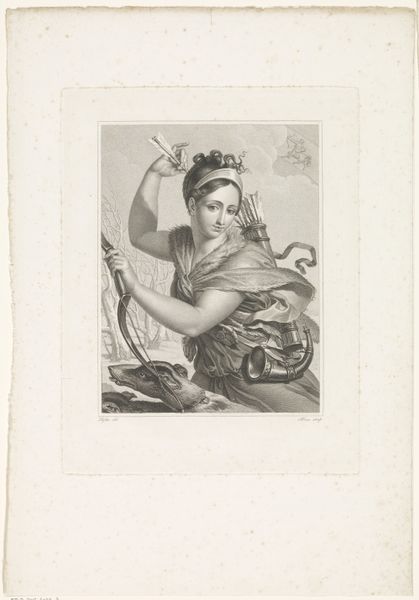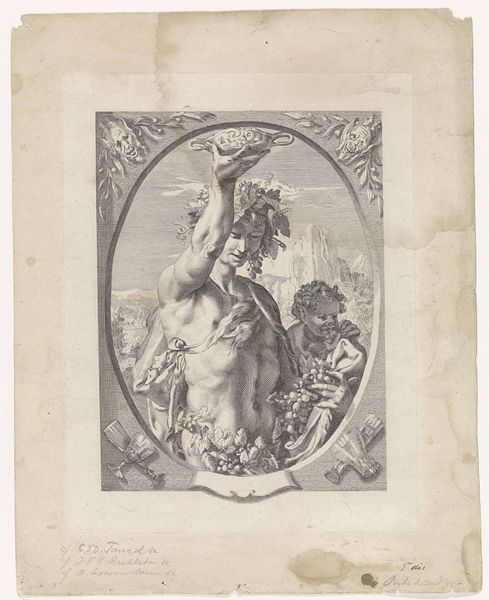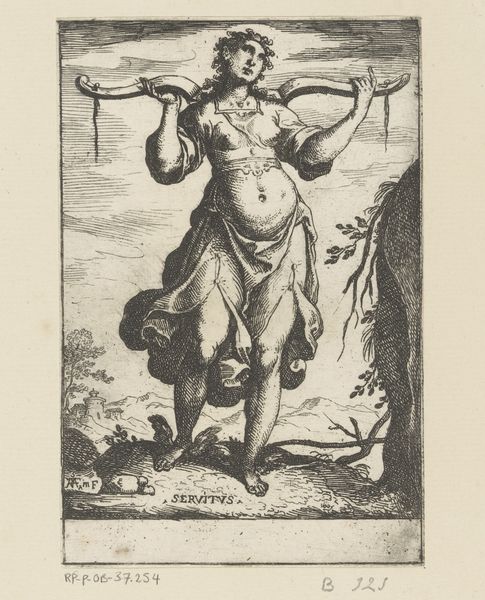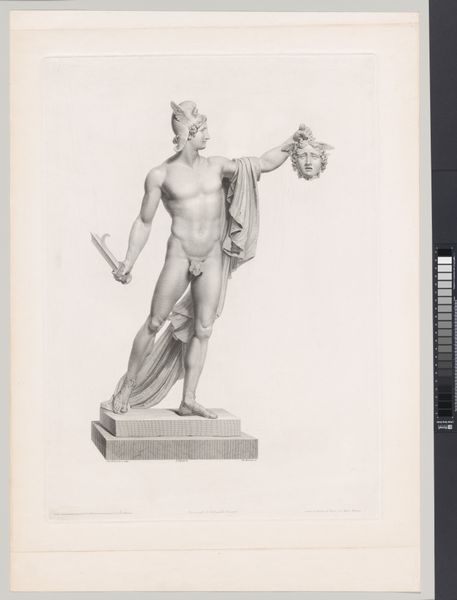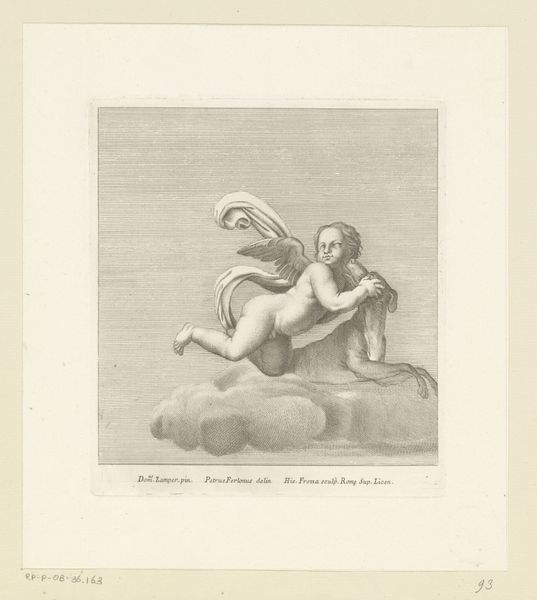
engraving
#
allegory
#
figuration
#
11_renaissance
#
line
#
history-painting
#
nude
#
engraving
Dimensions: height 131 mm, width 80 mm
Copyright: Rijks Museum: Open Domain
Curator: We’re looking now at Philips Galle's "Venus" from 1581, an engraving held here at the Rijksmuseum. My immediate impression is the confident poise—she's an emblem of serenity, emerging from the clouds, isn’t she? Editor: What strikes me is the tension between the ethereal subject and the very grounded medium. Galle uses line engraving, a process requiring incredible skill and labor. The piece is almost a collaboration of artistic vision and material process—the dance of hand and tool. Curator: That process definitely speaks to the allegory she represents: beauty born of craft, divine inspiration refined through earthly means. The delicate lines almost give the illusion of shading; it feels richer than a simple print. She embodies both love and labor, no? Editor: Exactly! Look closely: She carries not just beauty but symbols of industry and wealth, which ties the visual art back into the economic structure of the time, where engravings facilitated the broad circulation of imagery to varied socioeconomic classes. I wonder who owned this print originally, where was it hung? Curator: A worthy thought; knowing its provenance would undoubtedly reshape how we see it today. And Venus herself—aloof, idealized yet powerfully present; there is such nuance, especially if one focuses on her faint smile. Do you feel it, this inherent ambiguity? Is she benevolent, or just indifferent? Editor: I wonder about access, actually—engravings democratizing images to more buyers as compared to paintings accessible primarily by elites. Curator: Quite right, but to my eye, her posture does indeed suggest both authority and a certain… vulnerability. Venus holding both a flame and shell: The flame symbolizing passion and the shell maybe a hint at the depths of womanhood. It has an aura of complexity beyond mere idealization. It’s lovely when allegory has such personal implications. Editor: I see her both as an object of aesthetic desire but also a commodity subject to processes of production and the social circulation which were central to 16th century visual culture, and I find it hard to separate those observations here. Curator: Material consideration, balanced by ethereal appeal—such dueling facets offer a more vivid viewing experience overall. A perspective on art beyond pure form!
Comments
No comments
Be the first to comment and join the conversation on the ultimate creative platform.


